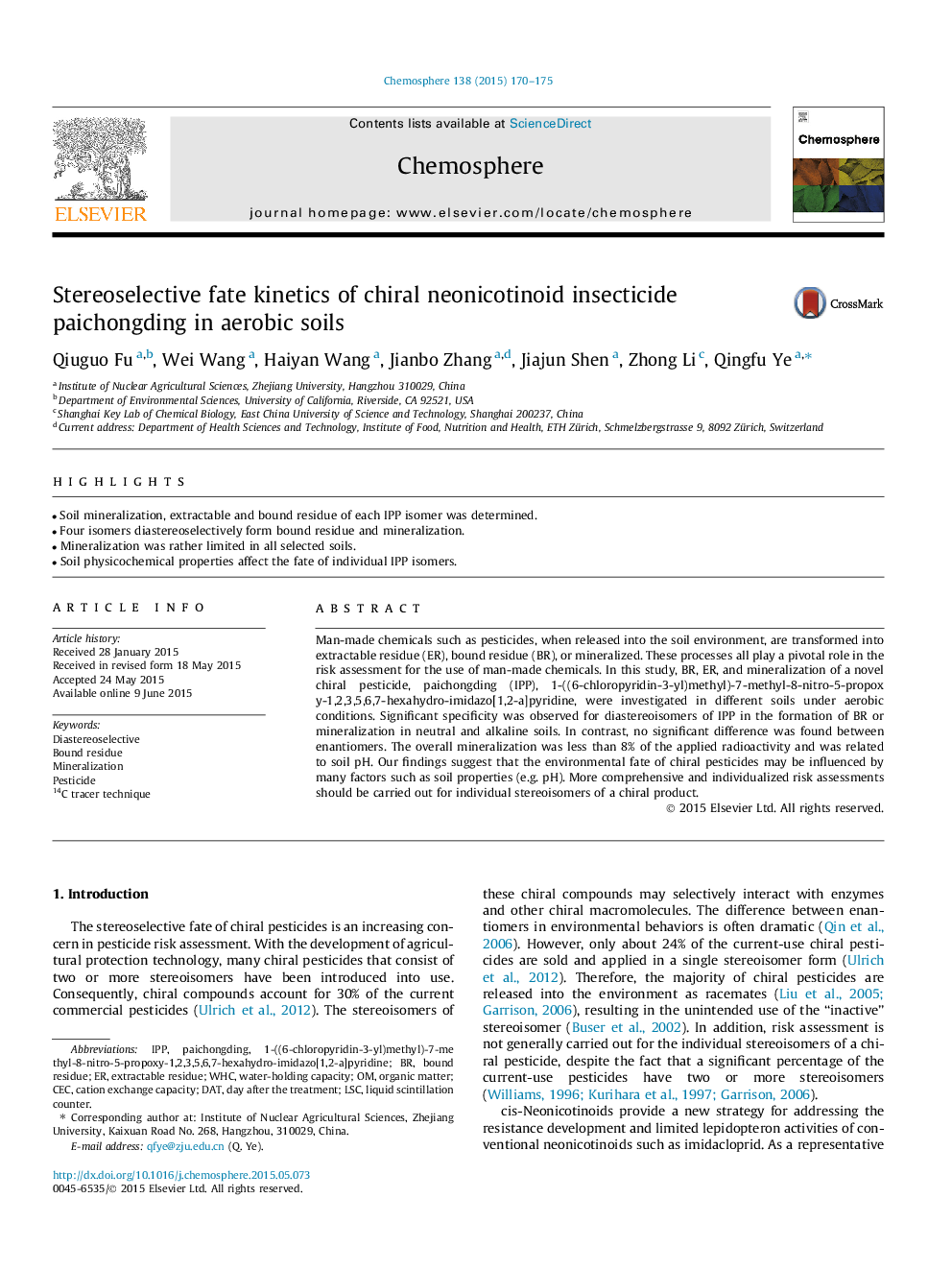| Article ID | Journal | Published Year | Pages | File Type |
|---|---|---|---|---|
| 6307425 | Chemosphere | 2015 | 6 Pages |
Abstract
Man-made chemicals such as pesticides, when released into the soil environment, are transformed into extractable residue (ER), bound residue (BR), or mineralized. These processes all play a pivotal role in the risk assessment for the use of man-made chemicals. In this study, BR, ER, and mineralization of a novel chiral pesticide, paichongding (IPP), 1-((6-chloropyridin-3-yl)methyl)-7-methyl-8-nitro-5-propoxy-1,2,3,5,6,7-hexahydro-imidazo[1,2-a]pyridine, were investigated in different soils under aerobic conditions. Significant specificity was observed for diastereoisomers of IPP in the formation of BR or mineralization in neutral and alkaline soils. In contrast, no significant difference was found between enantiomers. The overall mineralization was less than 8% of the applied radioactivity and was related to soil pH. Our findings suggest that the environmental fate of chiral pesticides may be influenced by many factors such as soil properties (e.g. pH). More comprehensive and individualized risk assessments should be carried out for individual stereoisomers of a chiral product.
Keywords
Related Topics
Life Sciences
Environmental Science
Environmental Chemistry
Authors
Qiuguo Fu, Wei Wang, Haiyan Wang, Jianbo Zhang, Jiajun Shen, Zhong Li, Qingfu Ye,
